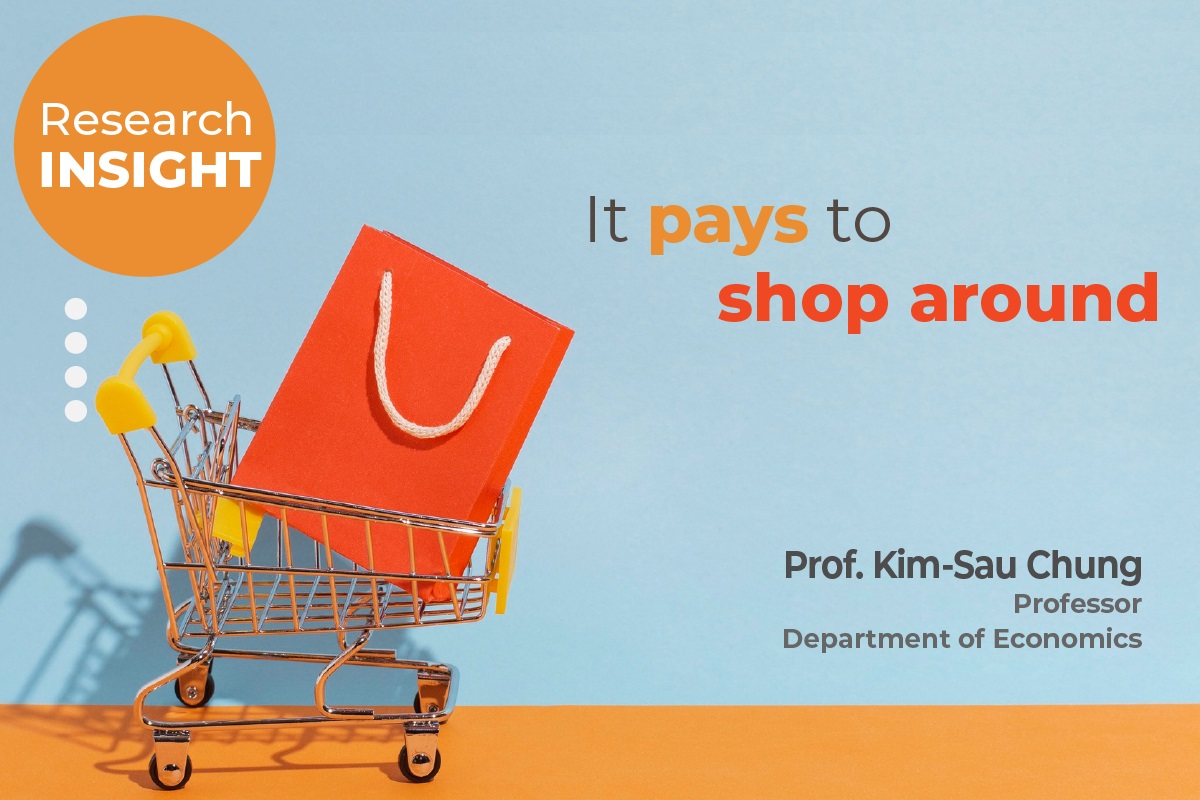School of business - research
It pays to shop around


As the old saying goes, the devil is in the details. Yet while some of us spend hours agonising over the most minute details of everything we buy – whether it’s a package trip to Thailand featuring a selection of 7 “similar” hotels or 5 different android phones with the same functions – other seem incapable to differentiate whether a car is better than another by any other criteria than its colour. What can a marketer do to drive sales or increase market share if some buyers are incapable to recognise a great deal from a lousy one?
Building on insights about how Americans select between prescription drug plans offered by Medicare, a recent paper1 led by Prof. Kim-sau Chung investigates how sellers behave when their target consumers have problems identifying – or sometimes caring about – small differences. Noting that people have been known to choose inferior Medicare plans, what appears counter-intuitive is that the odds of selecting an inferior plan decline when consumers are offered an increasing number of objectively inferior plans. How is that possible when some consumers cannot appreciate a good deal when they see one?
Adding choices – especially bad ones – can steer buyers towards a good deal, especially when the actual value of the various options are hard to calculate, differ across multiple dimensions (like screen size and memory for similar computers) or when consumers are overloaded with hard-to-understand information (what is the clock speed of a computer and why does it matter anyway?). Thus, while some consumers will still opt for the inferior option, it seems that the mere existence of another deal – sold either by the same seller or by a competitor – is enough to help at least some consumers make a better choice. As the number of bad deals increases, the odds of choosing the better one increases as each lousy offer repels a different group of consumers.
Take personal computers. If Acer proposes two deals, it will strategically position one as the “good” deal, and the other one as the “bad” deal, using the inferior option to help consumers appreciate the better one. However, should Lenovo were to introduce a competing deal for a similar computer, both sellers will naturally free ride on each other, with one seller emerging as the “good-deal” provider and the other one turning into the “bad-deal” seller. While the “good-deal” seller will be pleased the bad option offered by its competitor will help some consumers appreciate its offer, the firm marketing the bad deal will be content with moving some products.
So whenever you are looking at buying the next smartphone or a new life insurance policy, remember to take your time, shop around and read the fine print. Caveat emptor!
Reference:
1 Chung, K., Liu, E. M., & Lo, P. (2021). Selling to Consumers Who Cannot Detect Small Differences. Journal of Economic Theory, 192, 105186.